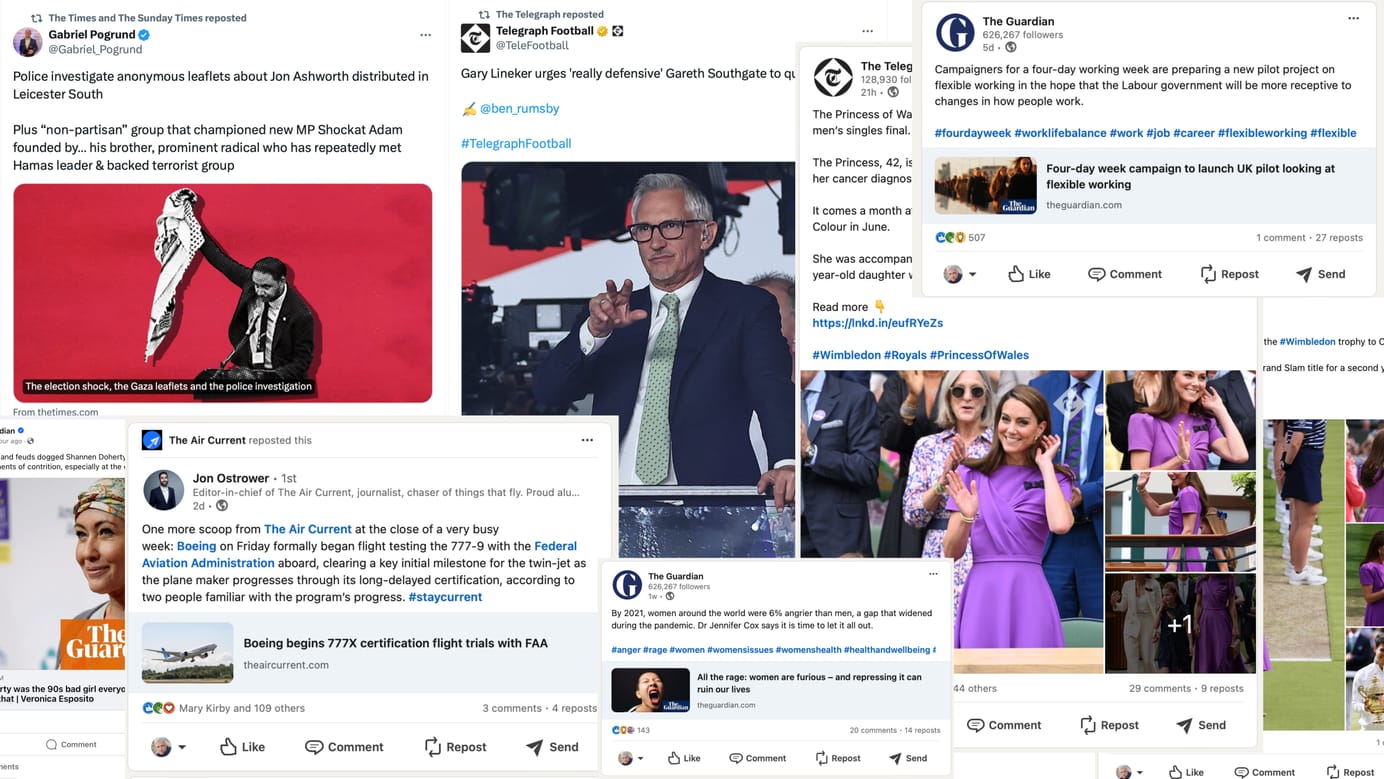Surviving the Facebook click-bait algorithm change
One of the most dangerous things you can do on the internet is start depending on one other company almost entirely for your traffic. A few years ago, I ended up working briefly with a business that was built on search, and was almost wiped off the internet by the Panda update to the Google search algorithm. It was an SEO-driven business, but the change was so profound that SEO tactics couldn’t recover it – it needed long-term content development that nobody in the business was geared up to deliver.
That business was eventually sold on, in much diminished form. Live by the algorithm, die by the algorithm.
Facebook Algorithm changes
All of which brings us to Facebook, which has become the dominant force in traffic generation for a new wave of online sites. This rather famous graph of Buzzfeed traffic sources illustrates that well:

The Facebook news feed is sorted via an algorithm; you don’t see (by default) everything your friends and brands you’ve Liked post. Facebook makes a guess as to what is most interesting to you, based on a mix of your own actions and those of others, and then shows you that content. And they’ve just made a change that will impact some of those sites:
We’re making two updates, the first to reduce click-baiting headlines, and the second to help people see links shared on Facebook in the best format.
This is interesting, because they are two quite different situations, and worth exploring in depth.
Click-baiting
One of the big trends of the last year has been the rise of the “curiosity gap” headline, a headline that teases you with what you’re about to get, but without making it absolutely obvious. It uses emotional manipulation – “you won’t believe what happened next” – to get you to click through. This is almost the diametric opposite of the traditional search-driven approach of making the headlines as clear as possible. In fact, it’s almost a reversion to the “clever” headline writing of print, but turned up to eleven.
It was a great idea – a headline format optimised for social rather than search. And it’s been widely copied, and diluted as it spreads. Every last cheap’n’fast content site is using some variation of it, and the content the other side rarely lives up to the headline billing. Facebook can see that as it tracks user behaviour in detail:
One way is to look at how long people spend reading an article away from Facebook. If people click on an article and spend time reading it, it suggests they clicked through to something valuable. If they click through to a link and then come straight back to Facebook, it suggests that they didn’t find something that they wanted. With this update we will start taking into account whether people tend to spend time away from Facebook after clicking a link, or whether they tend to come straight back to News Feed when we rank stories with links in them.
This is interesting – because this is now a common behaviour with Google which does exactly the same thing. If people bounce back quickly from your site to the search result page after following a search link, then your ranking will decrease over time.
As Mary notes, this is not fabulous news for the traditional – short – news story:
Increasingly, news sites are using stub articles – a few sentences or shorter – to break fast-moving stories, atomising them into smaller and smaller pieces. Those pieces might take seconds to read. If they’re promoted on Facebook, how does a news reader clicking through, reading the whole thing then backing out look different from someone clicking on a curiosity-gap headline then backing out because it wasn’t what they wanted?
There’s certainly an argument here that the shift to stub articles is a mistake, and a misapplication of print values to a digital environment – but that’s fodder for another post. The core message is that short news snippets are now unlikely to perform well in either search or Facebook-driven social media. And make no mistake, however obsessed we journalists are with Twitter, Facebook is still the really mainstream, big traffic site.
So, there’s a pressure here towards longer or growing articles – or at least articles where we always give the reader a related next click or two – both from search and social.
It’s interesting to note that, at the very least, Upworthy have been shifting away from the curiosity gap for a while. Why? Because it’s been over-used by competitors, and is becoming noise. That’s pretty much exactly why Facebook is making this change.
Link Formatting
It’s been relatively well-known for a while that you can often get a link to perform better on Facebook by attaching it to a photo post – or a standard status update – rather than using the full link format:

Indeed, the general drift has been towards using the status update rather than the photo post in the last six months, as Facebook seemed to be down ranking links attached to photos.
Now, they’re clamping down hard.
With this update, we will prioritize showing links in the link-format, and show fewer links shared in captions or status updates.
The best way to share a link after these updates will be to use the link format. In our studies, these posts have received twice as many clicks compared to links embedded in photo captions.
Pretty clear message here: stop trying to game the algorithm. If you want to share a link, use the link format. Sure, photos get more engagement, but that’s because people like interacting around photos, not because they like interacting around photos and swallowing a link too, by mistake.
I suspect the net effect of this will be to decrease the organic reach of many poor quality pieces of content in the broadest sense. In many cases, organic reach was already plummeting, because people were focusing too much on their brand pages, and not enough on encouraging Facebook users to share things themselves. For one thing, it places much more importance on you having good Open Graph metadata on your pages, so you can effectively control how your link appears when published in Facebook.
(I’ve been publishing Open Graph metadata here for three years now. How are your sites doing on that?)
It means you have to work harder at picture choice and description text to encourage people to click through. And it means you need to craft the sharing post to “sell” the story. But, frankly, you should have been doing that anyway, if you wanted good traffic results from Facebook.
And you do want good results from Facebook. The Telegraph recently revealed that they’d boosted traffic by putting more effort into Facebook than Twitter, because more of their traffic was already coming from there:
“We have found that for every minute put into promoting something on Facebook, we get a significantly larger traffic boost than we do from Twitter. We still put energy into Twitter, but since there is a bigger bang for effort we put more into Facebook.”
Facebook is mainstream in a way Twitter just isn’t right now. And that means that we have another ever-shifting algorithm to deal with, not just Google’s.
And that’s why you should never make your entire traffic acquisition strategy dependent on one – or even two – services whose behaviour you don’t control.
Sign up for e-mail updates
Join the newsletter to receive the latest posts in your inbox.











